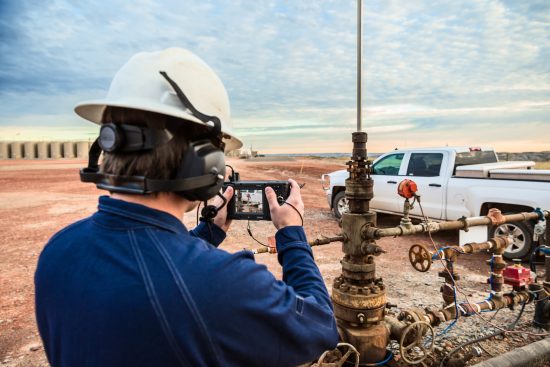































I often meet with customers about the first and easiest way to use IoT in an industrial domain: by deploying wireless technology.
There is a lot of variety of Radio Frequency (RF) technologies being used in the industrial domain ranging from ZigBee to WirelessHART to WiFi to LoRa to LTE, etc. Unfortunately there is not a 'one size fit all' solution. When Cisco looks at this issue, we make sure our architecture supports all types of RF technology and will support future technology as well.
We have identified 7 main Oil + Gas use cases for the deployment of RF technology (especially WiFi):
Wireless Bridging
This is the most straightforward deployment of 'point to point' wireless connectivity. If a new area of an industrial site needs to be connected to the rest of the infrastructure of that location, it is more cost effective to do this wirelessly instead of running expensive cable runs to these (often) remote locations.
Mobile Workforce
This enables the workforce to bring wireless tablets and handheld bar code readers into the field to do regular and simple tasks in an online and automatic manner instead of using the 'pen and paper' way of working.

Wireless Sensors and Instrumentation
The deployment of more sensors providing more frequent readings with more data is becoming standard due to wireless technology. The time it takes to deploy these sensors (no cable runs needed) at multiple and changing locations has been dramatically reduced.
Personnel Health and Safety
The mobility aspect of wireless connectivity makes it possible to monitor the environment the worker is in. Are there dangerous levels of gasses in the area the person is in? Are there leaks or spillages of dangerous goods? By combining portable gas meter and active RFID tags for location determination, these health and safety issues can be addressed. Here's a video of the demo we gave at this past Cisco Live:
Watch on#Periscope: How can you boost worker productivity and safety in oil & gas? Demo today with John Helm!#CLUS https://t.co/3TRmQ35FO2
- Cisco Utilities (@CiscoUtilities) July 12, 2016
Turnaround
This refers to deploying wireless sensors to monitor vital characteristics of expensive and crucial equipment (valves, pumps, etc.) continuously or with very frequent intervals. This lowers unplanned downtime significantly and saves up to60%-70% of man-hoursneeded for inspecting.
Physical security
Access control, asset, and people surveillance in large and remote industrial facilities can be implemented cost effectively using wireless technologies like cameras and card readers.
Asset Location Tracking
Inventory, supply chain operations, and material management reduces the NPT (non-productive time) caused by searching for missing assets.
Once your wireless connectivity platform is in place, other solutions can make use of the wireless infrastructure. For example, hand-held radios and push-to-talk systems (Cisco Instant Connect) can be integrated with IP-based communication like telephones, Telepresence, and other video conferencing systems.
For moreConnected Oil and Gassolutions, visit our website.
To take a deeper dive into these macro-economic developments, read our latest whitepaper "A New Reality for Oil & Gas" and visit our webpage www.cisco.com/go/oilandgas for the latest updates.
To receive future blogs straight to your inbox:

 Tags chauds:
Internet of Things (IoT)
Transformation digitale
Connexion Wi-Fi gratuite
Cisco Industrial IoT (IIoT)
énergie
Oil and Gas
LoRa
Mobile workforce
rfid
Tags chauds:
Internet of Things (IoT)
Transformation digitale
Connexion Wi-Fi gratuite
Cisco Industrial IoT (IIoT)
énergie
Oil and Gas
LoRa
Mobile workforce
rfid